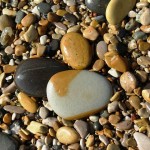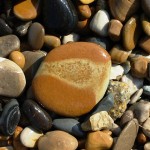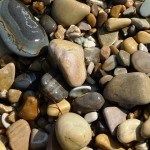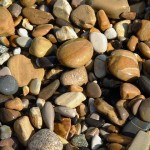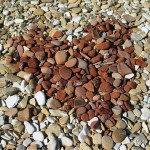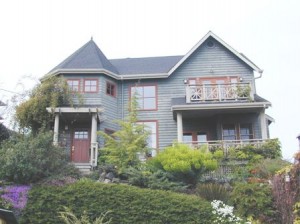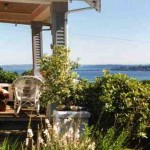- pebbles fill my shoes
- more patterns
- nature’s patterns
- more pebbles and stones
- pebbles and stones
- tumbled and worn, a red stone heart
For those of you who have known me for a l-o-n-g time, or even for ones who only occasionally stumble upon Shedstyle.com, it may be evident that I am torn between desperately missing Seattle, my home for most of the past 30 years, and embracing life in Southern California, where I’ve been living nearly 3 years now.
I’m learning that there is incredible beauty here in SoCal, especially if one gets off of the freeways and out into the raw, rugged nature. The same attributes that make me love the Pacific Northwest – the mountains, the ocean, the amazing plant life – are some of the ones that have made me begin to appreciate, value and (possibly) love my new home.
Yesterday was no exception. I slogged through 70 miles of freeway traffic on a mid-Sunday (which took 1 hour and 45 minutes, thank goodness for Prairie Home Companion or it would have been a lot worse!) to a place high above the ocean called Rancho Palos Verdes. When it comes to offering endless views of the Pacific shoreline, coastal beaches and blue ocean, it’s as breathtakingly gorgeous of a place as the more popular Malibu. Except, it seemed to me yesterday, with way less traffic and commercial development.
I met up with architect Ron Radziner of Marmol-Radziner, a Venice, Calif.-based architectural firm (which also has landscape architecture, interior design, furniture design and prefabricated design in its portfolio) to tour one of his projects. The property is called Altamira Ranch and the American Society of Landscape Architects recognized it with a residential design honor award in 2008. My interview with Ron about the project will appear in a future issue of Landscape Architecture magazine. Suffice it to say that the approximately three sweeping acres of California native plants, surrounding a contemporary residence (also designed by Marmol-Radziner) is a study in excellent design. It is lesson that Bud Merrill, my former garden design instructor, would have so loved. He preached the gospel of “environmentally responsive design” – and I tell you, this project – home and landscape – makes huge strides in that practice of only “lightly touching” the earth. Stay tuned for the full story.
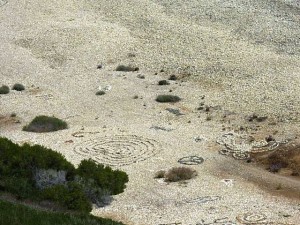
The alluring labyrinth patterns are visible from high above the beach
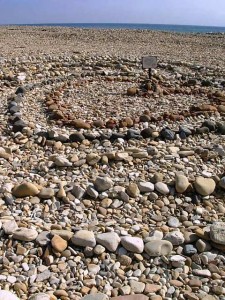
The stone design, made by unknown hands
After Ron and I finished the interview, Julie, the owners’ personal assistant, offered to walk the property with me.
She is a wealth of knowledge about native plants and how they perform in a residential setting – especially this tricky coastal site that is exposed to high winds, intense sun, frequent blankets of fog, and saltwater.
We paused at the edge of the bluff and looked down at the beach, which was probably 200 feet below us.
Julie pointed out the stone labyrinths that beachcombers have placed on the shore and she told me where to park so I could walk down to see them (she also suggested where I could grab some lunch; ironically, it was at the grill where golfers eat when they’re finished playing the greens at the Trump International Golf Club).
I hiked down to the beach and made my way across the uneven, rocky surface. It isn’t one of those “take off your shoes and stroll barefoot” kind of beaches. My shoes kept filling up with pebbles, but I couldn’t imagine going bare. The wind was brisk, which you’ll notice in the poor sound of the two short movies I shot. How else do you show the experience of a labyrinth without a moving picture?
At the Beach with Deb:
httpv://www.youtube.com/watch?v=BKYt9OW2iQE
Walking the Heart-shaped Labyrinth:
httpv://www.youtube.com/watch?v=HSxQm4iv_GA
Here’s my takeaway from yesterday’s unexpected hour on the beach: I was given yet another gift of California’s natural beauty. It was a vivid reminder that I am here for a reason. I am still discovering the reason(s), but isn’t having a chance to drink in this beach, collect a few of these stones and witness the creative way artistic humans have responded to them reason enough?










